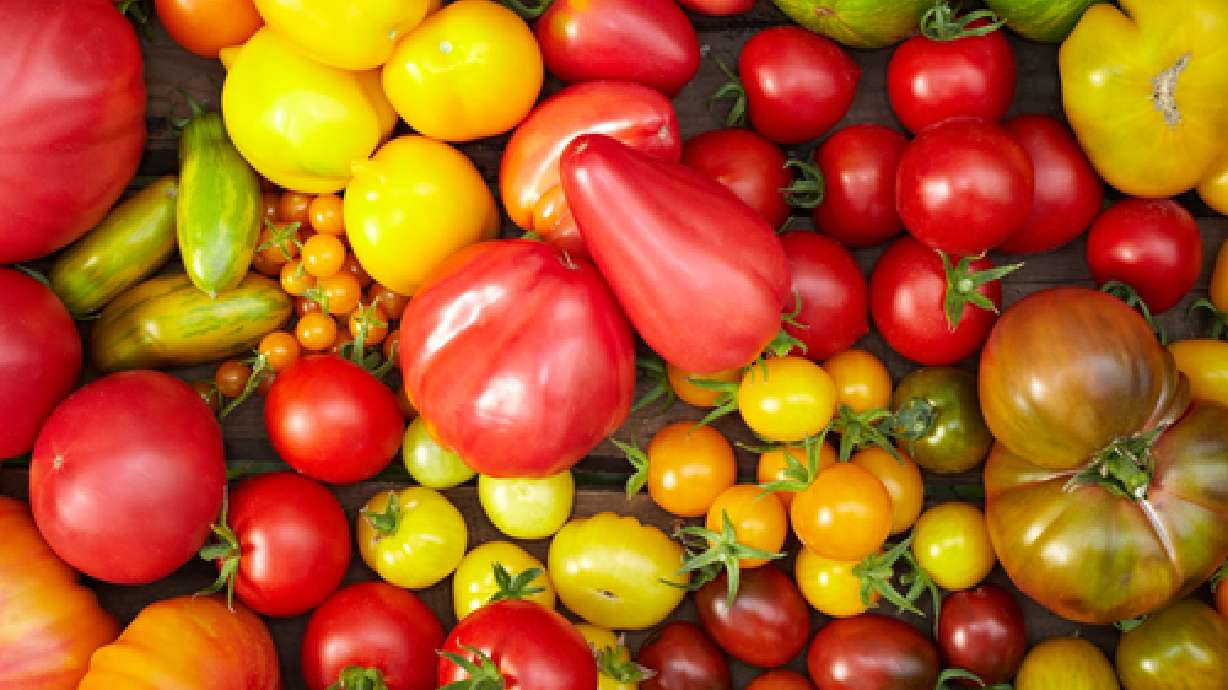Estimated read time: 3-4 minutes
This archived news story is available only for your personal, non-commercial use. Information in the story may be outdated or superseded by additional information. Reading or replaying the story in its archived form does not constitute a republication of the story.
Tomato Varieties Vegetables and herbs
Beginning Gardening
In the past, home gardens were an important part of supplementing tight budgets. An example of this was during World War I. Gardening was so important then that it helped win the war. During this time, existing national resources and infrastructure were excessively stretched, and without the public growing victory gardens, soldiers stationed overseas may not have had enough to eat. To maximize the impact of gardening, the government presented gardening as a patriotic duty and asked citizens to work in groups and share tools and even seed orders wherever possible. Landowners were encouraged to establish gardens on adjoining property lines. This would allow plowing of several garden plots simultaneously and manure for many gardeners could be delivered at once to the same location. Community gardening was especially important for those who lived in urban areas during this time. Even major corporations and schools provided land and resources for employees to raise vegetables on company or district property. Almost everything produced was either eaten or preserved. In fact, in 1918, Americans grew more than 5 billion dollars (current value) in vegetables.
Over the last few years, although times are not as hard as during World War I, gardening again has become important to boosting the home budget for many due the bad economy. Additionally, it has become a newly discovered hobby used for stress reduction and to improve the diet. As with anything when starting out, knowing how to manage soil and how many seeds or plants to purchase can be confusing. At some point, most have experienced growing too much of a certain vegetable. A prime example is zucchini.
Proper soil management is the most important aspect of raising a successful garden. Basics on how to do so can be found in a USU fact sheet entitled Preparing Garden Soil To determine approximately how many pounds of vegetables can be obtained per 100 foot row, access the "Vegetable Yields" link above. It lists most common vegetables. Another useful USU Extension fact sheet pertaining to vegetable gardening that includes information on plant and row spacing can be found here.
Even when those desiring to garden do not have access to a gardening area, many vegetables can be grown in containers or even indoors in a sunny location or under florescent bulbs. The key to doing so is meeting the basic needs of the plant. Consider the following: Most general potting soils are great for growing vegetables. Liquid fertilizers and slow release granules formulated for indoor or container plants are excellent for vegetables too. Vegetables, such as tomatoes, peppers, eggplants, leafy greens, peas, beans, many root crops, broccoli, cauliflower and many others are easily grown in containers. For larger plants, dwarfs or types bred for containers can be found. Peppers, tomatoes, beans, wheat, many herbs and even rice can be grown in bright locations or under florescent bulbs. For more information on how to do so inexpensively, visit this webpage.








